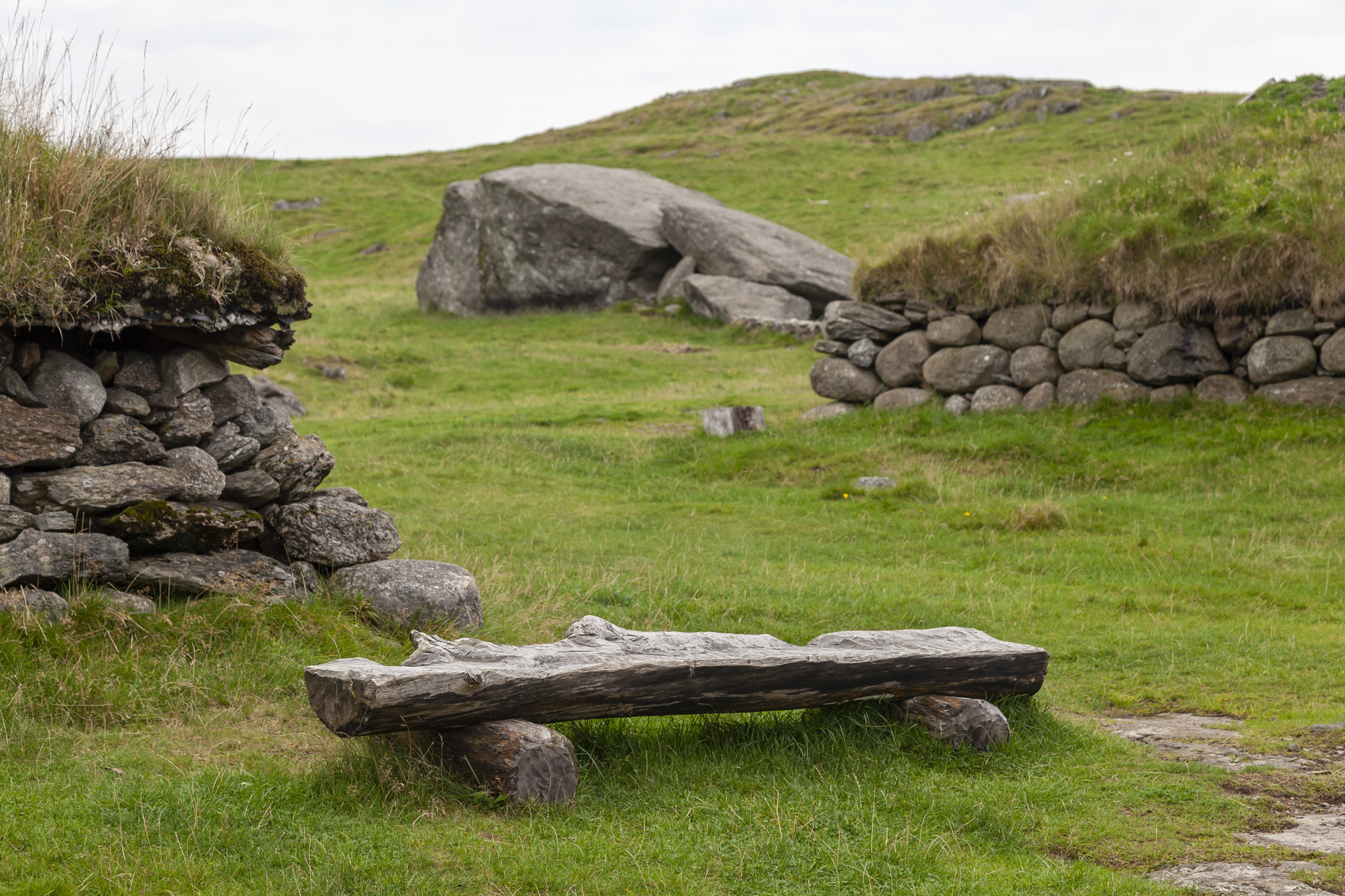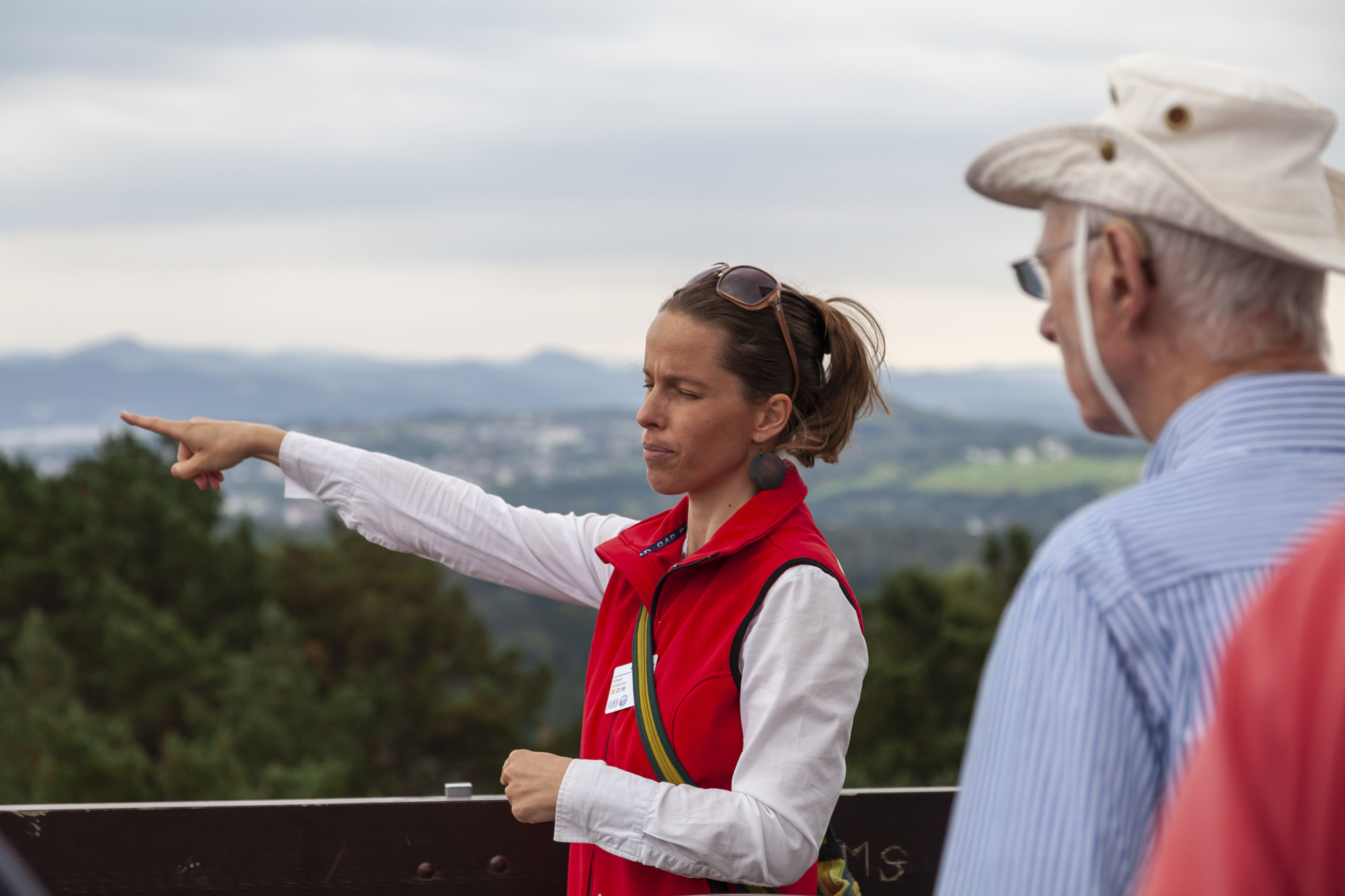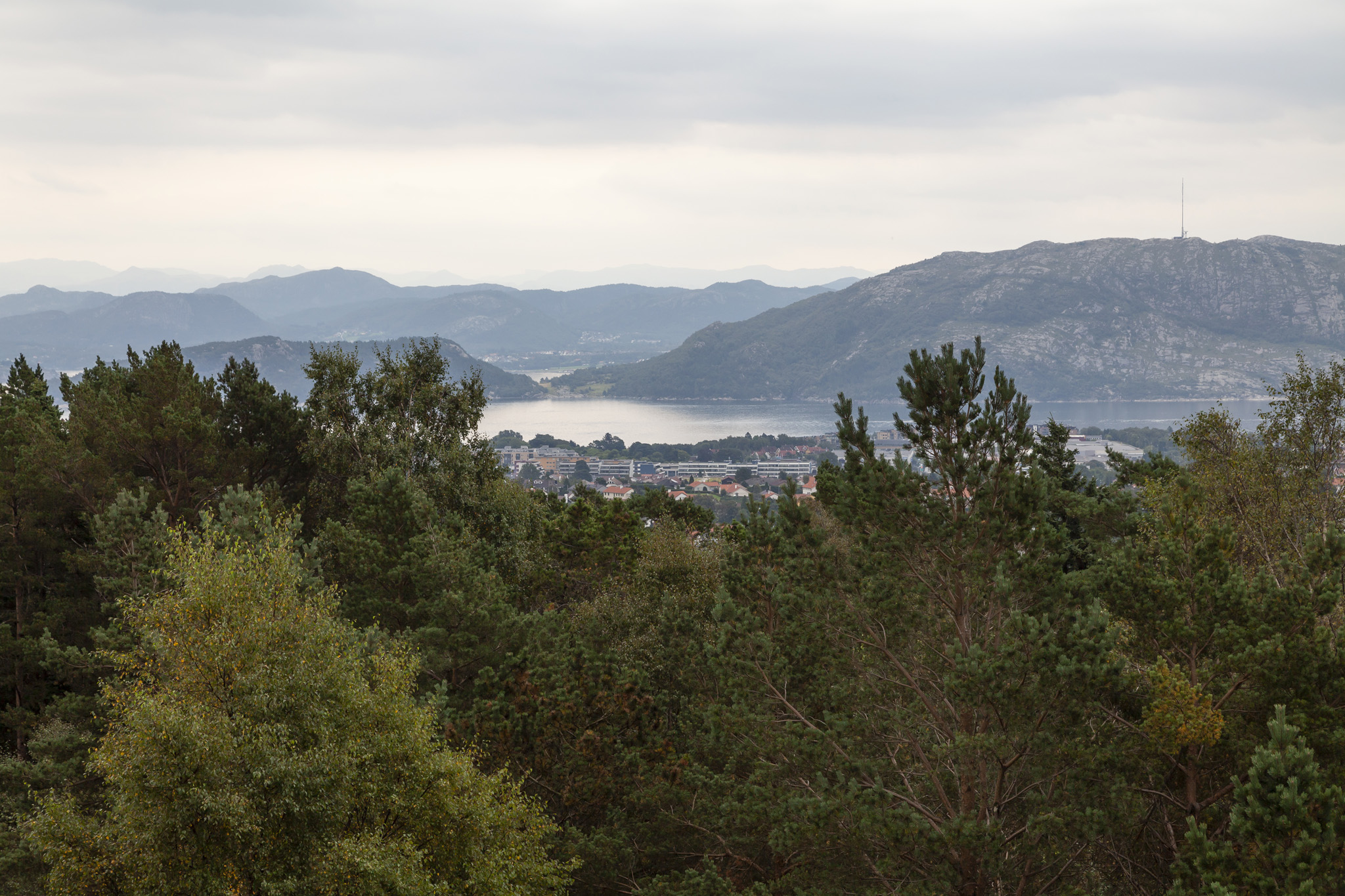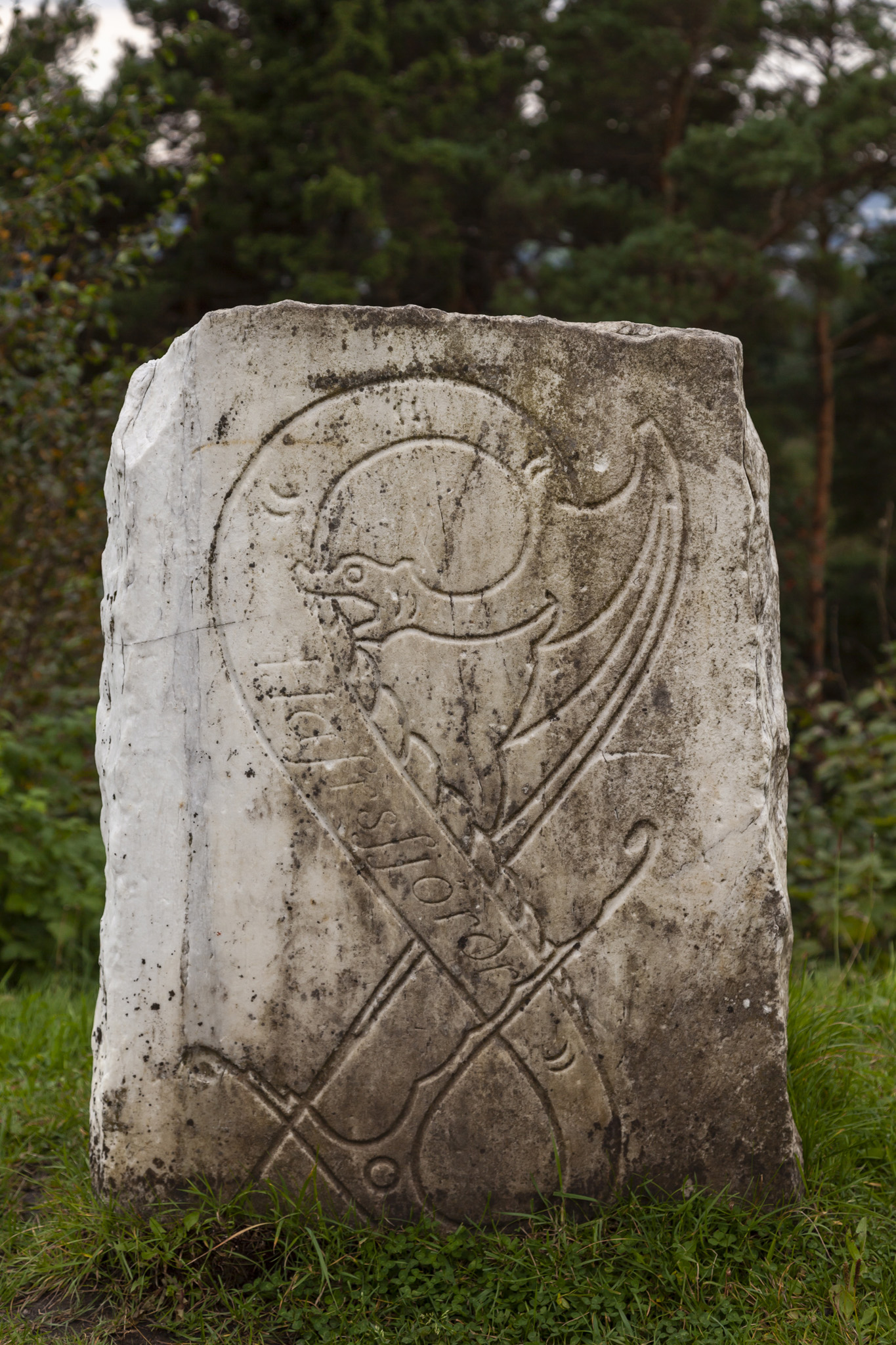The final stop of our week-long cruise on the Crown Princess cruise ship to Norway was at Stavanger. We were up in plenty of time to see the ship’s approach to the port, taking in views of the houses and other buildings as well as a number of bridges connecting islands around the city, and you can read more about that and see all the photos here: Norwegian Fjords Cruise To Stavanger.
Ullandhaug was the area of the city to which we first headed. There would be two components forming this part of the excursion and both from very different parts of Stavanger’s history. We started at the Iron Age Farm open air museum. The location of Jernaldergården felt a little anachronistic, being overlooked by apartment blocks on one side, and this did detract from being able to immerse yourselves fully in the history, but it was still very interesting to visit and the guides did a fabulous job of recounting tales of what life was like in the period between 350 and 550 CE.
We didn’t just wander around the exterior of the farm buildings like the sheep in the area, but also were taken inside one for some more iron age storytelling. The buildings were very interesting, set into the ground and with turf laid on the roofs to keep the places as warm as possible. They were, however, awkward to get into and out of without a lot of bending and risk of bumps to the head.
Staying in the Ullandhaug area we next paid a visit to Ullandhaugtårnet, a telecommunications tower and landmark overlooking the city of Stavanger. Built in 1964 and standing sixty four metres in height there were some delightfully brutalist elements to the design that I loved and that many of our fellow passengers on the excursion couldn’t stand. As a light drizzle accompanied our visit to the tower and there were steps involved to get onto its viewing platform, a fair number of people decided to stay on the bus for the short time of our visit as a result.
Other than providing some lovely views of the Norwegian landscape around Stavanger, the tower itself did not have a lot of history, although it was built next to the spot where another tower commemorating the Battle of Hafrsjord had been erected in 1896 but which had been mostly destroyed during the Second World War. Stone markers with Viking symbols indicated where the remains of the tower had been removed the year before the telecoms tower had been constructed.
We enjoyed the scenery and tutted a little at the mediocre quality of the street art decorating some of the walls before heading back to the bus which was waiting to take us back to Stavanger.





































